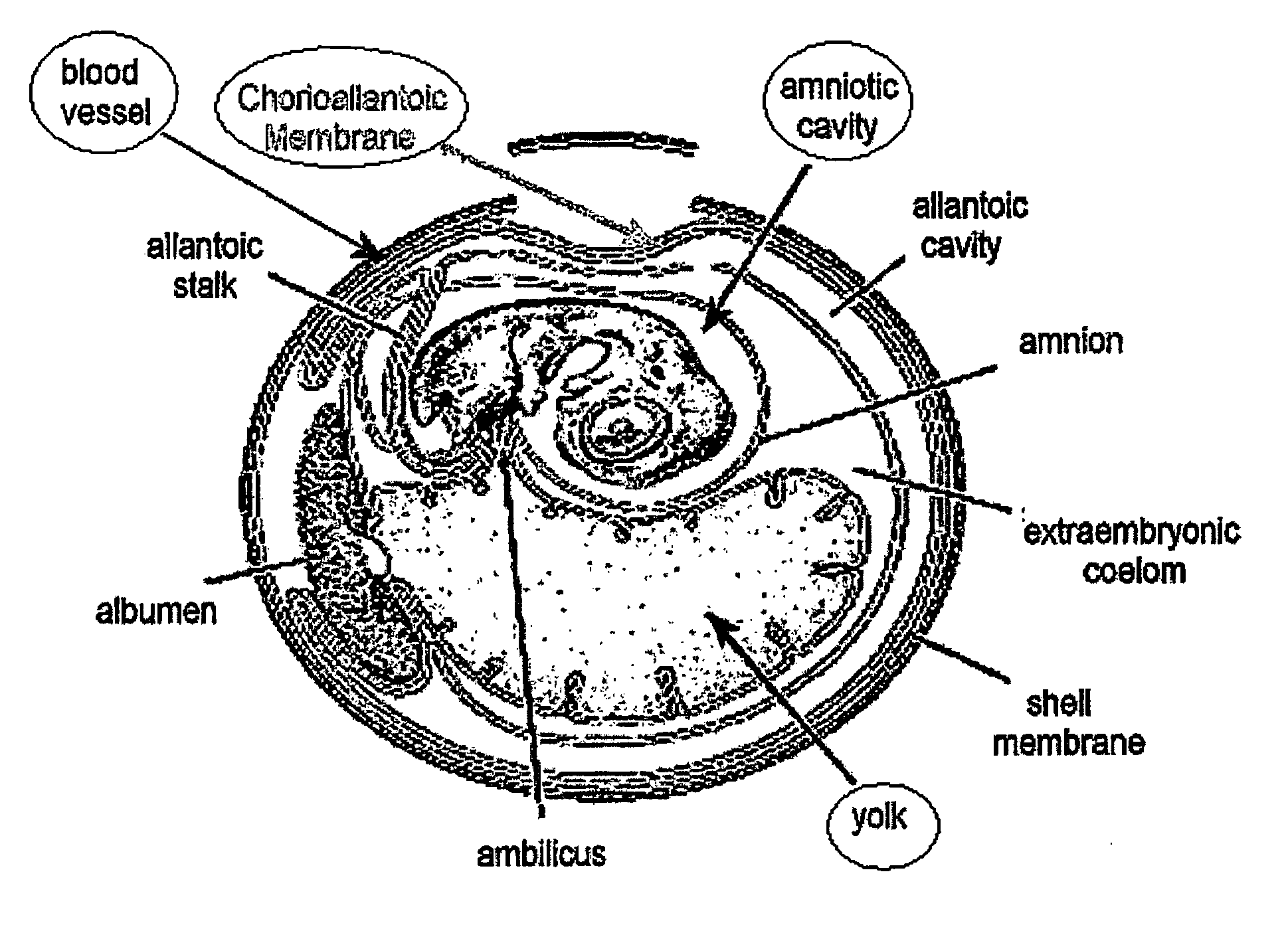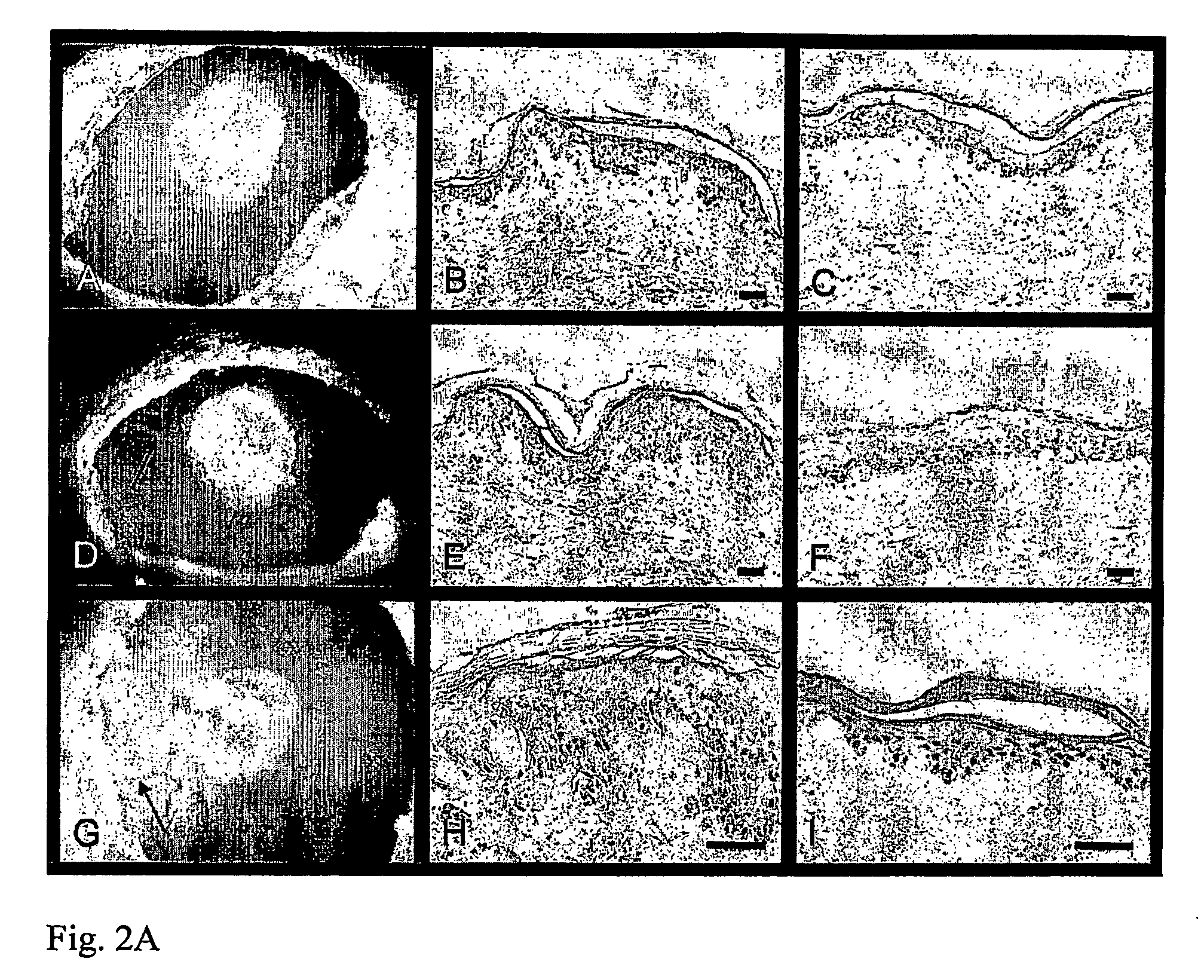Chimeric Avian-Based Screening System Containing Mammalian Grafts
a screening system and avian technology, applied in the field of chimeric model systems, can solve the problems of high cost, poor screening effect, poor screening effect, etc., and achieve the effect of convenient and efficient system, and convenient and efficient system
- Summary
- Abstract
- Description
- Claims
- Application Information
AI Technical Summary
Benefits of technology
Problems solved by technology
Method used
Image
Examples
example 1
Culturing of Human Skin Explants on the Chorioallantoic Membrane (CAM) of a Fertilized Avian Egg
[0300]Materials and Methods:
[0301]Eggs: Freshly-laid fertile chicken eggs were obtained from a local farm. Eggs were stored at 15° C. until required, warmed for one hour to room temperature, and then incubated vertically with the point down in a humid atmosphere at 37° C. for 5-10 days before use. On the third day of incubation, the eggs were turned upside down, and a small hole was made in the sharp side of the egg after cleaning with a tissue impregnated with 70% ethanol. This created an artificial air sac so that the CAM can be accessed later on without causing bleeding.
[0302]Human Skin: Human skin that is normally discarded from mastectomies and abdominal surgery was obtained from the Shaarei Zedek hospital in Jerusalem and Tel Aviv Mediccal Center in Tel Aviv. Permission was obtained from the hospitals' Medial ethic committee according to the Helsinki accords. The skin was pinned out...
example 2
Human Skin Irritation can be Quantified Using the Skin-Cam System
[0312]Punch biopsies of human skin were grafted onto the CAM of a fertilized egg as described in Example 1. The human skin samples were allowed to incubate for 2 days after grafting in order to allow for the skin to incorporate, and then the adhesive tape sealing of the samples was reopened. The detergent sodium dodecylsulfate (SDS) was applied to different skin samples at different concentrations topically using a small plastic ring cut from a pipette tip keep the irritant in place. The skin samples were then resealed and returned to the incubator for an addition three days, whereupon they underwent routine histological and immunochemical analysis using Abs for the proliferation marker PCNA. PCNA+ cells were counted in several sections, and the length of the epidermis in the section measured. Results are expressed as PCNA+ cells / mm.
[0313]As can be seen in FIG. 3A, SDS, a known irritant, significantly increases epiderm...
example 3
Wound Healing of Both Mouse and Human Skin on the CAM
[0315]Wound Healing of Mouse Skin
[0316]Mouse skin samples were cut into twenty-five millimeter square pieces, and puncture wounds were produced with a 2.5 mm dermatological biopsy punch. At this point, skin samples were grafted onto the CAM of a fertilized egg as described in Example 1. Up to three samples were grafted into each egg. The skin was then cultivated for an additional 5 days before harvesting for histological and immunocytochemical analysis.
[0317]Wound Healing of Human Skin
[0318]The above procedure was repeated for human skin.
[0319]Results
[0320]FIG. 4 illustrates wound healing in mouse and human skin grafted to the chick CAM. Panels A-D show hematoxylin and eosin-stained sections of mouse skin that had been cut with a 0.3 mm punch. In the low magnification images (panels A and B), the opening remaining after healing for 5 days is illustrated by the dashed lines. The boxed areas are enlarged in panels C and D, and the o...
PUM
| Property | Measurement | Unit |
|---|---|---|
| frequency | aaaaa | aaaaa |
| time | aaaaa | aaaaa |
| surface area | aaaaa | aaaaa |
Abstract
Description
Claims
Application Information
 Login to View More
Login to View More - R&D
- Intellectual Property
- Life Sciences
- Materials
- Tech Scout
- Unparalleled Data Quality
- Higher Quality Content
- 60% Fewer Hallucinations
Browse by: Latest US Patents, China's latest patents, Technical Efficacy Thesaurus, Application Domain, Technology Topic, Popular Technical Reports.
© 2025 PatSnap. All rights reserved.Legal|Privacy policy|Modern Slavery Act Transparency Statement|Sitemap|About US| Contact US: help@patsnap.com



